By Nurul Islam Laskar
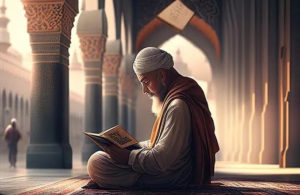 Ramzan is the month of self control and introspection for Muslims all over the world. During this month, devout Muslims abstain from food and water during the day but as a spiritual undertaking, also refrain from idle talk, negative engagement, and other worldly pleasures. The Arabic month ‘Ramzan’ is followed by the ‘Shawwal’ month. On the last day of Ramzan, no sooner the new crescent of Shawwal is seen lurking on the horizon, the entire Muslim world bursts into a joyous mode. The entire night is spent in the preparation of sweets and delicacies, for it’s going to be Eid the following morning.
Ramzan is the month of self control and introspection for Muslims all over the world. During this month, devout Muslims abstain from food and water during the day but as a spiritual undertaking, also refrain from idle talk, negative engagement, and other worldly pleasures. The Arabic month ‘Ramzan’ is followed by the ‘Shawwal’ month. On the last day of Ramzan, no sooner the new crescent of Shawwal is seen lurking on the horizon, the entire Muslim world bursts into a joyous mode. The entire night is spent in the preparation of sweets and delicacies, for it’s going to be Eid the following morning.
Even though the fête is officially known as Eid ul-Fitr, various sections of people located in parts of the world have given it their own chosen names. For example, in Bangladesh and West Bengal in India, people often call it ‘Ramzan Eid’ while the Tamils call it ‘Nanbu Perunal’, Sudanese ‘Babran Siam’, and a vast majority of Urdu speaking people ‘Choti Eid’.
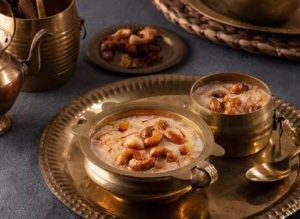 It is believed that the celebration of Eid began in the period following the migration of the holy Prophet Muhammad from Makkah to Madina. Muslims celebrate two Eids – Eid ul-Fitr and Eid ul-Azha. Once the fasting in the month of Ramzan is over with, Muslims celebrate Eid ul-Fitr to rejoice and offer gratitude to Allah. A little more than two months after Eid ul-Fitr, whereas Eid ul-Azha is celebrated on the tenth day of the Arabic month Zul Hajj and is a festival of sacrifice symbolised by slaughter of animals and distribution of meat to the needy. During both the Eids, Muslims wear new clothes and go to the Eidgah, which is usually an open field, to offer congregational prayers.
It is believed that the celebration of Eid began in the period following the migration of the holy Prophet Muhammad from Makkah to Madina. Muslims celebrate two Eids – Eid ul-Fitr and Eid ul-Azha. Once the fasting in the month of Ramzan is over with, Muslims celebrate Eid ul-Fitr to rejoice and offer gratitude to Allah. A little more than two months after Eid ul-Fitr, whereas Eid ul-Azha is celebrated on the tenth day of the Arabic month Zul Hajj and is a festival of sacrifice symbolised by slaughter of animals and distribution of meat to the needy. During both the Eids, Muslims wear new clothes and go to the Eidgah, which is usually an open field, to offer congregational prayers.
A few days before Eid ul-Fitr, Muslims also begin with remitting the obligatory alms called zakat and fitra to the marginalised and the needy in society. While zakat is meant for poverty alleviation, fitra enables the poor in celebrating the occasion in a manner akin to their affluent counterparts. After the prayers are accomplished, devotees embrace one another and exchange Eid greetings. While women in large numbers take part in Eid prayers in countries like Indonesia and Malaysia, in India participation of women in Eid prayers is limited to a few places only. Devout Muslims go to Eidgah by one route and return home by another.
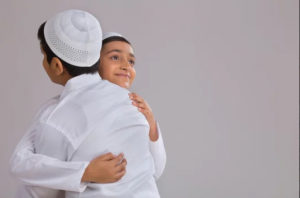 Once home, the children greet their elders, in anticipation for their Eidi, or a monetary present that the elders bless them with. Eidi is not a religious custom, it has evolved as a social practice. In my circles, I know of an IAS officer who gets an Eidi of Rs 20 from his 90 year old elder sister, who is a doctor by profession. Every year, she puts a crisp Rs 20 note inside an envelope and gifts it to her brother on the day of Eid.
Once home, the children greet their elders, in anticipation for their Eidi, or a monetary present that the elders bless them with. Eidi is not a religious custom, it has evolved as a social practice. In my circles, I know of an IAS officer who gets an Eidi of Rs 20 from his 90 year old elder sister, who is a doctor by profession. Every year, she puts a crisp Rs 20 note inside an envelope and gifts it to her brother on the day of Eid.
Festivities worldover
Eid, like many other festivities, is celebrated in various parts of the world, and in its own characteristic fashion. In Tunisia, locals prepare a sweet treat named ‘Baklava’ for the occasion and distribute it among their friends and neighbours. Tunisians also indulge in dancing and merry making during the day and in the evening the families along with the children, visit one another.
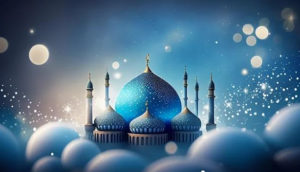 In South Africa, people assemble in a celebratory mode as soon as the Eid moon is sighted the previous evening. They congregate for Iftar, then perform the salah of Maghrib and soon thereafter the muezzin announces in a loud voice that the Eid moon has been sighted. People in the entire area get busy with arrangements for the revelry of the festival the following morning.
In South Africa, people assemble in a celebratory mode as soon as the Eid moon is sighted the previous evening. They congregate for Iftar, then perform the salah of Maghrib and soon thereafter the muezzin announces in a loud voice that the Eid moon has been sighted. People in the entire area get busy with arrangements for the revelry of the festival the following morning.
The people of Saudi Arabia immerse themselves by cleaning and sprucing up their houses a few days before the big day, just like the people of India do before the festival of Diwali. During the celebration of Eid, hospitality knows no bounds in Saudi Arabia. The shops, markets, and malls wear a carnival look. All the shops offer delectable treats and gifts to their customers. For example, if a customer buys two boxes of chocolates, she or he will receive a serving bowl free of cost for presenting the chocolates. There is a region named Al Qasim in central Saudi Arabia, and according to the tradition there, as soon as the Eid prayers are over, each family brings out a carpet from their house and spreads it on the roadside. They also bring along with them all the delicacies that have been readied for the merrymaking and have it spread on the carpet. All are free to partake in the fest and savour the dishes presented before them.
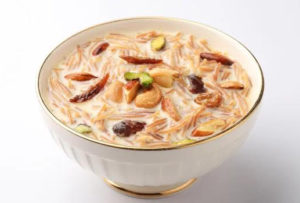 The jolly making lasts for three days in Turkey. Soon after the prayers, people gather near the graveyards and offer ‘Ziarat’ for the departed souls and pray for their welfare in the hereafter. The adjacent areas assume the looks of a fairground. Makeshift shops are set up to sell flowers, rosewater, and holy books.
The jolly making lasts for three days in Turkey. Soon after the prayers, people gather near the graveyards and offer ‘Ziarat’ for the departed souls and pray for their welfare in the hereafter. The adjacent areas assume the looks of a fairground. Makeshift shops are set up to sell flowers, rosewater, and holy books.
In Egypt, schools and colleges are given long holidays. The Imam, who spearheads the Eid prayers, inspires the congregation to follow the path, and help the poor in his sermons that follow the prayer. Many families in Egypt are westernised to an extent and get on cruises, visit sea beaches, theatres, or take a boat ride on the Nile on the occasion of Eid. The TV channels dish out endless programmes in keeping with the spirit of the festival.
In the Indian subcontinent, women wear mehndi henna art on their hands one or two days before the festival. Many of them buy and wear colourful glass bangles. The Eid menu in this region cannot be imagined without the traditional sewaiyan, a form of vermicelli cooked either with milk or sugary syrup and served with a generous serving of dry fruits. In Bangladesh, there are huge Eidgahs where as many as three lakh people assemble to offer their prayers together. India’s biggest Eid congregation takes place at Jama Masjid in Delhi.
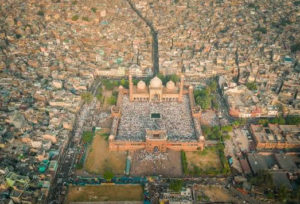 Both public and private sector employers in Indonesia usually offer an additional month’s salary to their employees as Eid bonus. An organisation that does not do so, may face penalties imposed by the government. Malaysia, Singapore, and Brunei also celebrate Eid with great fanfare. In most of these countries, the household workers leave for their villages during Eid. To avoid any crisis caused in their kitchens by this exodus, many affluent families move over to star hotels during the celebrations! Earlier, there used to be heavy fireworks during Eid, but nowadays it is on a low ebb due to environmental restrictions.
Both public and private sector employers in Indonesia usually offer an additional month’s salary to their employees as Eid bonus. An organisation that does not do so, may face penalties imposed by the government. Malaysia, Singapore, and Brunei also celebrate Eid with great fanfare. In most of these countries, the household workers leave for their villages during Eid. To avoid any crisis caused in their kitchens by this exodus, many affluent families move over to star hotels during the celebrations! Earlier, there used to be heavy fireworks during Eid, but nowadays it is on a low ebb due to environmental restrictions.
The population of Muslims in Australia is not very big. Yet, the Australian government extends patronage to Eid celebrations in cities like Sydney, Canberra, and Melbourne. The Australian government invites eminent Muslim personalities from other countries to grace the Eid festivities in their country.
In the USA, Muslims of different ethnic origins get together to offer Eid prayers. Eid feasts are organised in mosque complexes or at recreational venues, skating rinks, or convention centres. In New York City, relaxation in vehicle movement is announced on the occasion. Since 2001, the US Post has been issuing special postage stamps every year to mark the festival. In Canada, food banks are set up by the well to do, so that the needy can pick up their choicest Eid delicacies from there.
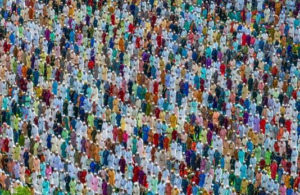 Eid celebrations in London and the United Kingdom at large, invariably have an international flavour. If the Bengali inhabited streets emit the aroma of pulao and korma, the areas with Pakistan origin inhabitants fill the nostrils with the flavours of nihari and samosa.
Eid celebrations in London and the United Kingdom at large, invariably have an international flavour. If the Bengali inhabited streets emit the aroma of pulao and korma, the areas with Pakistan origin inhabitants fill the nostrils with the flavours of nihari and samosa.
Ten out of 56 recognised communities of China are Muslims by faith. Their total population is near about 20 million. When the Han community of Xin Xiang province celebrates Eid, the state authorities chip in their resources in sending meat and other edibles to the houses of economically handicapped Muslims. Eid is celebrated with great pomp in Yunnan province of China as well.
Indian origin people are in majority in countries like Fiji, Mauritius, and Guiana. The imprint of Indian traditions, therefore, is quite visible in Eid celebrations in those countries.
Today, millions of Muslim displaced persons from regions like Afghanistan, Syria, Sudan, Gaza, Rakhine are living in refugee camps or under the open sky. Their Eid celebrations, if any at all, are entirely dependent on the charities of governments, aid bodies, and NGOs.
The Shillong Chapter
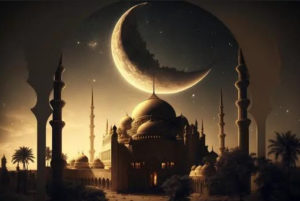 During my growing years, preparation of assorted sweetmeats would begin a few days prior to the D day. Almost all members would participate in these activities.The most popular items were ‘pob’ (minced sweetened coconut wrapped in corn flour breads), all kinds of namkeen, and pancakes made out of rice powder and jaggery. Sewaiyan or vermicelli was the hallmark item of Eid. Nowadays, seviyan is available in packets sold in shops and malls. In those days it was not so. Every household had a machine for making seviyan from the dough of maida at least a week ahead of Eid for these had to be dried in the sun, baked, and then made ready for consumption adding milk, sugar, and dry fruits. After consuming sweets in the morning, dressed in new clothes, with itr or perfume, some would also wear Surma in their eyes and then proceed to the Eidgah for the congregational prayer.
During my growing years, preparation of assorted sweetmeats would begin a few days prior to the D day. Almost all members would participate in these activities.The most popular items were ‘pob’ (minced sweetened coconut wrapped in corn flour breads), all kinds of namkeen, and pancakes made out of rice powder and jaggery. Sewaiyan or vermicelli was the hallmark item of Eid. Nowadays, seviyan is available in packets sold in shops and malls. In those days it was not so. Every household had a machine for making seviyan from the dough of maida at least a week ahead of Eid for these had to be dried in the sun, baked, and then made ready for consumption adding milk, sugar, and dry fruits. After consuming sweets in the morning, dressed in new clothes, with itr or perfume, some would also wear Surma in their eyes and then proceed to the Eidgah for the congregational prayer.
During the month of Ramzan, observing the donation of zakat, the deprived and madrassa teachers from remote areas would throng in Shillong in the hope of getting financial help during Ramzan and Eid. On the day of Eid, volunteers went around collecting money for the maintenance of the Eidgah and Kabristan (burial ground) as also for paying the honorarium for the Imams who led the prayers. Shillong, in the days of the undivided Assam, was its capital and thousands of people participated in the prayers situated on the banks of Umshyrpi rivulet, at the spot where the Glass Masjid or the Madina Masjid stands today. The spectacular Glass Masjid has added a new aura to the whole place, and today, the Eid prayer takes place partly in the Glass Masjid and partly in the pen Eidgah that lies adjacent to the Masjid.
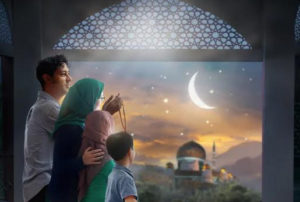 The vehicles of the armed and paramilitary forces that brought a large number of Muslim officers and jawans for their Eid prayers would be parked in the field adjacent to the Lady Hydari Park along the road leading to the Pine Mount School. Colourful gates were constructed at the entrance of the Eidgah, and there would be hawkers selling balloons, toys, snacks and caps.
The vehicles of the armed and paramilitary forces that brought a large number of Muslim officers and jawans for their Eid prayers would be parked in the field adjacent to the Lady Hydari Park along the road leading to the Pine Mount School. Colourful gates were constructed at the entrance of the Eidgah, and there would be hawkers selling balloons, toys, snacks and caps.
Since Shillong was the capital city, many prominent personalities like Syed Fazal Ali, Governor of Assam; Fakhruddin Ali Ahmed, who later became the President of India; Moinul Hoque Choudhury, later took charge as the Union Minister for Industrial Development; Imdad Ali, Director General of CRPF; and Air Vice Marshal IH Latif who later became the Air Chief of India would grace the prayers at different times.
Very often, Imams came from various places of India to lead the Eid congregation. Among many, I fondly remember Syed Shamsul Huda, who had led the Eid prayers in Shillong once in the seventies. He was the Director of Public Instructions (DPI) Assam and had graduated from the All Azhar University of Egypt. His recitation of the Arabic Quran was 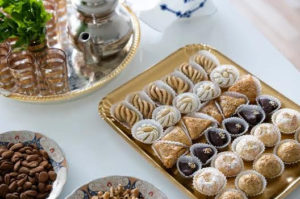 meticulous and mellifluous at the same time.
meticulous and mellifluous at the same time.
The eastern side of the Eidgah was a hilly terrain and there were rows of houses on it. People of all faith dwelled in those houses. During the Eid prayers, they would all be at their windows watching the progress of the prayer, bewitched by its discipline and synchronisation. Photographing and documenting such moments was hardly a thing to do, quite contrary to what we witness today.
There are two Muslim burial grounds in Shillong – one in Laban and another at Jhalupara. After Eid prayers, many of us would visit the kabristan to pray for the eternal peace of all departed souls. Then we’d return home to devour the pulao and chicken korma made by my mother followed by visits to neighbours, relatives, and friends belonging to different faiths.
 Over the years, the forms of revelry have evolved to Eid Meets or Mehfils where invitees are entertained with mushairas (a poetic symposium or a forum of free self-expression, popular especially in Hyderabad, northern India, and Pakistan) and qawwalis (a poetic form of devotional Sufi Islamic poetry aimed at leading its listeners to religious and poetic ecstasy, towards a union with god or Allah). In short, it is more extravagant in every form – from gifting, to donning of attires on the big day. However, the spirit, I believe, remains unchanged in faith and spirit.
Over the years, the forms of revelry have evolved to Eid Meets or Mehfils where invitees are entertained with mushairas (a poetic symposium or a forum of free self-expression, popular especially in Hyderabad, northern India, and Pakistan) and qawwalis (a poetic form of devotional Sufi Islamic poetry aimed at leading its listeners to religious and poetic ecstasy, towards a union with god or Allah). In short, it is more extravagant in every form – from gifting, to donning of attires on the big day. However, the spirit, I believe, remains unchanged in faith and spirit.
(The author is a motivational speaker, former columnist in the 1980s and 90s, and now a contributor at The Shillong Times)



